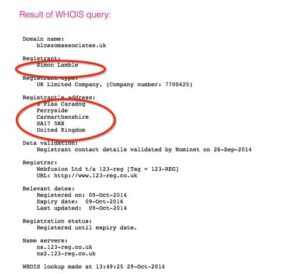Ready to unlock the hidden potential of regular expressions when it comes to domain names? Well, you’re in for a treat! Today, we’re diving into the fascinating world of harnessing the power of regular expressions for domain names. Strap in and get ready for an exhilarating ride through the realm of coding and web development.
When it comes to creating dynamic and efficient websites, domain names play a crucial role. They are the virtual address that users type into their browsers to access a website. But did you know that regular expressions can be used to validate and manipulate domain names? Yes, you heard it right! Regular expressions, those powerful patterns that can match and manipulate text in ways you never thought possible, can be harnessed to ensure that domain names follow specific rules and formats.
So, if you’re a web developer or just a curious individual looking to expand your coding skills, you’re in the right place. In this article, we’ll explore how regular expressions can be used to validate domain names, extract subdomains, and even perform advanced pattern matching. Get ready to unlock the full potential of regular expressions and take your domain name game to the next level. Let’s dive in!

Harnessing the Power of Regular Expressions for Domain Names
Regular expressions are a powerful tool for manipulating and validating data in various programming languages. When it comes to domain names, regular expressions can be especially useful for tasks such as validating user input, extracting specific information, or performing pattern matching. In this article, we will explore how regular expressions can be harnessed to handle domain names effectively, ensuring accurate data and smooth functionality.
The Basics of Regular Expressions
Regular expressions, often abbreviated as regex, are a sequence of characters that define a search pattern. They are widely used in programming to perform pattern matching, find and replace operations, and data validation. In the context of domain names, regular expressions can be used to ensure that the entered domain name adheres to specific rules and formats.
To understand regular expressions better, let’s take a look at an example. Suppose we have a requirement to validate domain names and ensure that they follow the format “www.example.com.” We can use the following regular expression pattern: /^www\.[a-zA-Z0-9\-]+\.[a-zA-Z]{2,}$/
Breaking down the regular expression:
– ^ signifies the start of the string.
– www\. matches the literal characters “www.”
– [a-zA-Z0-9\-]+ allows for one or more alphanumeric characters or hyphens.
– \. matches the period character.
– [a-zA-Z]{2,} matches two or more alphabetic characters.
– $ signifies the end of the string.
Using this regular expression, we can validate whether a domain name begins with “www.” followed by a combination of alphanumeric characters and hyphens, and ends with a valid top-level domain (TLD) consisting of two or more alphabetic characters.
Benefits of Regular Expressions for Domain Names
Regular expressions offer several benefits when it comes to handling domain names. Here are a few key advantages:
1. Validation: Regular expressions allow us to validate the format and structure of domain names, ensuring that they meet specific criteria. This helps maintain data integrity and prevents incorrect or malformed domain names from being accepted.
2. Pattern Matching: With regular expressions, we can extract specific information from domain names. For example, we can retrieve the subdomain, domain, or TLD separately, enabling us to perform targeted operations or analysis.
3. Efficiency: Regular expressions are highly efficient for processing and manipulating large sets of domain names. They provide a concise and powerful way to handle complex matching patterns, reducing the need for manual string manipulation.
4. Flexibility: Regular expressions offer flexibility in handling variations in domain name formats. For instance, we can create patterns that accommodate different subdomain structures, TLDs, or country-specific domain extensions.
Common Regular Expression Patterns for Domain Names
Now that we understand the basics of regular expressions and their benefits, let’s explore some common patterns used for handling domain names.
Pattern 1: Validating Domain Names
One common use case for regular expressions is validating domain names to ensure they adhere to specific rules. Here’s an example of a regular expression pattern to validate domain names:
/^(?:[a-zA-Z0-9](?:[a-zA-Z0-9\-]{0,61}[a-zA-Z0-9])?\.)+[a-zA-Z]{2,}$/
This pattern allows for domain names with one or more subdomains, separated by periods. Each subdomain can contain alphanumeric characters and hyphens, with a maximum length of 63 characters. The TLD must consist of two or more alphabetic characters.
Pattern 2: Extracting Domain Components
Another useful application of regular expressions is extracting specific components from a domain name. Let’s say we want to extract the subdomain, domain, and TLD from a given domain name. Here’s an example of how we can achieve that using regular expressions:
/^(?:([a-zA-Z0-9\-]+)\.)?([a-zA-Z0-9\-]+\.[a-zA-Z]{2,})$/
This pattern captures the subdomain (if present) and the domain name, along with the TLD. We can use this information for further processing or analysis.
Best Practices for Using Regular Expressions with Domain Names
When working with regular expressions for domain names, it’s essential to follow some best practices to ensure accuracy and maintainability.
1. Consider Internationalized Domain Names (IDNs): Keep in mind that domain names can include non-ASCII characters, known as IDNs. Ensure that your regular expressions account for these characters if your application supports IDNs.
2. Validate TLDs: Regularly update your regular expressions to include the latest valid TLDs. TLDs are constantly evolving, and new ones are introduced over time.
3. Test and Debug: Regular expressions can be complex, so it’s crucial to thoroughly test and debug them. Use online regex testers or dedicated software to validate your patterns against different domain name scenarios.
4. Document Your Patterns: Document the regular expressions you create for domain name handling. This will help you and other developers understand the logic behind the patterns and make future modifications or enhancements easier.
By harnessing the power of regular expressions for domain names, you can improve your application’s data validation, pattern matching, and overall efficiency. They provide a flexible and reliable tool to handle the complexities of domain names, ensuring accurate and consistent data processing. So, embrace regular expressions and unlock their potential for effective domain name management.
Key Takeaways: Harnessing the Power of Regular Expressions for Domain Names
- Regular expressions are powerful tools for pattern matching and validation in domain names.
- They can be used to enforce specific rules and restrictions on domain names.
- Regular expressions provide a flexible way to search, validate, and manipulate domain names.
- Understanding the syntax and components of regular expressions is essential for effectively working with domain names.
- Regular expressions can be used in various programming languages and tools to handle domain name-related tasks.
Frequently Asked Questions
What are regular expressions and how can they be used for domain names?
Regular expressions are patterns used to match and manipulate strings of text. In the context of domain names, regular expressions can be used to validate and extract specific information from domain names. For example, you can use regular expressions to ensure that a domain name follows a specific format, such as having a certain number of characters or containing specific characters. Regular expressions can also be used to extract the domain extension or subdomain from a given domain name.
Regular expressions provide a powerful tool for working with domain names, allowing you to efficiently handle tasks such as validation, extraction, and manipulation of domain name data.
How can regular expressions be used to validate domain names?
Regular expressions can be used to validate domain names by checking if they meet certain criteria. For example, you can use a regular expression to ensure that a domain name consists of alphanumeric characters and hyphens, with a minimum and maximum length. You can also use regular expressions to validate the specific format of domain extensions, such as ensuring that they are in the format of two to six characters.
By applying regular expressions to domain names, you can easily determine whether a given domain name is valid or not, preventing incorrect or malformed domain names from being used.
Can regular expressions be used to extract subdomains from domain names?
Yes, regular expressions can be used to extract subdomains from domain names. By defining a regular expression pattern that matches the desired subdomain format, you can extract the subdomain portion of a domain name. For example, if you want to extract the subdomain from the domain name “subdomain.example.com”, you can use a regular expression pattern that matches any characters before the first dot.
Regular expressions provide a flexible and efficient way to extract specific information from domain names, including subdomains.
How can regular expressions help with domain name manipulation?
Regular expressions can be used to manipulate domain names by applying patterns to modify or transform them. For example, you can use regular expressions to remove specific characters or words from a domain name, replace certain patterns with others, or rearrange the order of subdomains.
By harnessing the power of regular expressions, you can easily customize and modify domain names to suit your specific needs or requirements.
Are there any resources or tools available for working with regular expressions for domain names?
Yes, there are various online resources and tools available for working with regular expressions for domain names. Many programming languages have built-in support for regular expressions, providing libraries or functions specifically designed for working with them. Additionally, there are online regex testers and validators where you can test and fine-tune your regular expressions before implementing them in your code.
Some popular resources for learning and experimenting with regular expressions include regular expression cheat sheets, online tutorials, and forums where you can seek help or advice from other developers.
Remember that practice and experimentation are key to mastering regular expressions for domain names.
Learn Regular Expressions In 20 Minutes
Final Thought: Unleashing the Power of Regular Expressions for Domain Names
As we wrap up our exploration of harnessing the power of regular expressions for domain names, it’s clear that this versatile tool offers immense potential for web developers, SEO experts, and anyone working with domain data. By utilizing regular expressions, we can efficiently validate, extract, and manipulate domain names, saving time and effort in the process.
Regular expressions provide a flexible and powerful way to define patterns and rules for matching domain names. Whether you’re validating user input, extracting domain components for analysis, or implementing complex domain-related functionalities, regular expressions offer a compact and efficient solution. With their ability to handle complex patterns and variations, regular expressions prove indispensable when working with domain names.
By incorporating regular expressions into your coding repertoire, you are equipped to handle the intricacies of domain name manipulation with ease and efficiency. Remember to optimize your regular expressions for performance and consider the specific requirements of the domain names you’re working with. With practice and experimentation, you’ll soon become a master at utilizing regular expressions to unlock the full potential of domain names.
So go ahead, embrace the power of regular expressions, and take your domain name handling skills to new heights. Whether you’re building websites, implementing SEO strategies, or simply exploring the fascinating world of domain names, regular expressions will undoubtedly become your go-to tool for taming the complexities of domain data. Happy coding!






